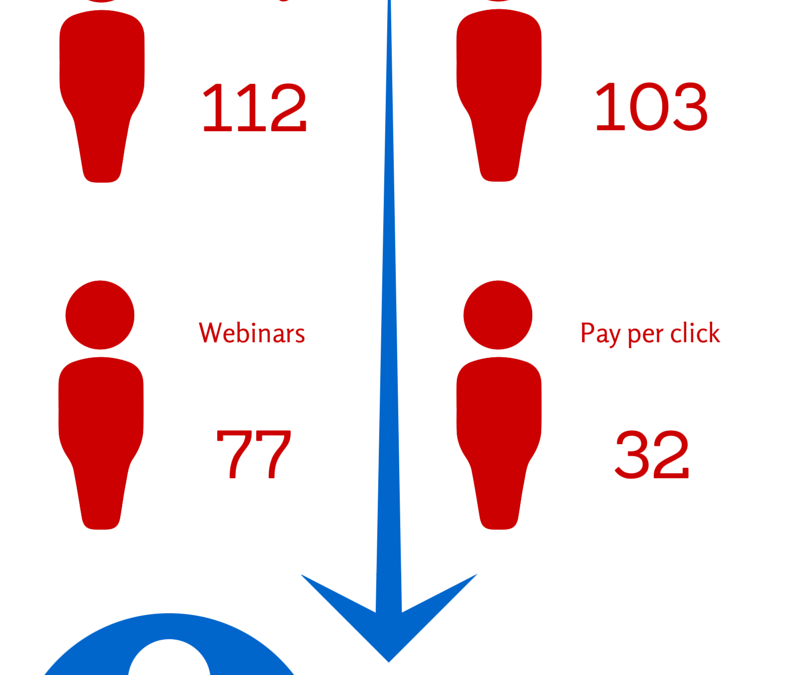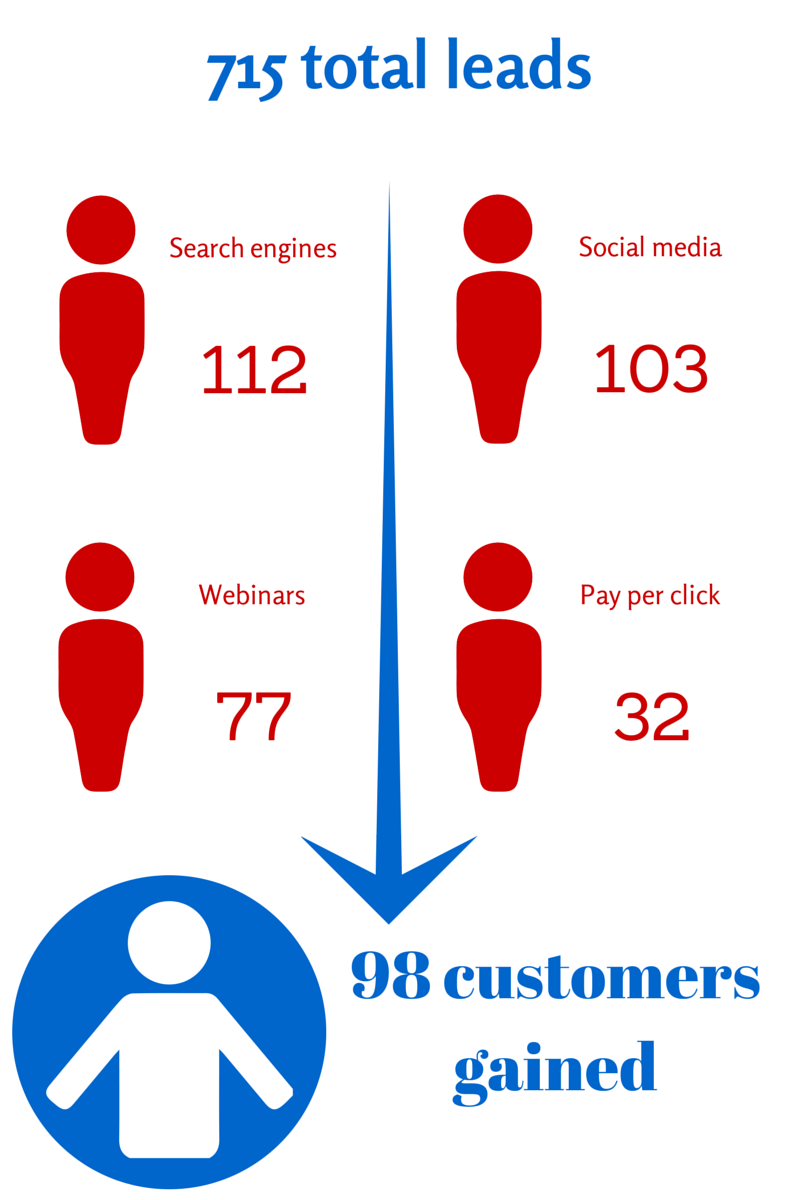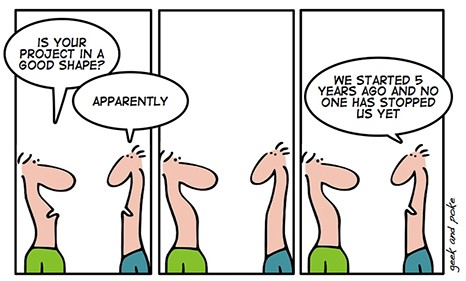
by Fronetics | Nov 18, 2014 | Blog, Logistics, Marketing
 Cerasis is a top North American third party logistics company offering logistics solutions with a strong focus on LTL freight management. In 2012 the company decided to move from a traditional approach to marketing (ads in print publications and a heavy reliance on referrals) to a digital strategy – inbound marketing.
Cerasis is a top North American third party logistics company offering logistics solutions with a strong focus on LTL freight management. In 2012 the company decided to move from a traditional approach to marketing (ads in print publications and a heavy reliance on referrals) to a digital strategy – inbound marketing.
Within 25 months:
- Visits to the Cerasis website increased by 1,141%;
- Visits to the company blog increased from zero to 46,404;
- Traffic driven by social media increased by 376,150%;
- Organic traffic increased by 4,066%.
Moreover, Cerasis gained 715 leads. Fourteen percent of these leads converted to customers. The 98 new customers Cerasis gained through their inbound marketing efforts generated a 14% increase in revenue.
To learn more about Cerasis’ approach to inbound marketing and for more results, download the case study: 3PL company Cerasis acquires 98 customers through inbound marketing.

by Fronetics | Nov 18, 2014 | Blog, Logistics, Marketing
 Cerasis is a top North American third party logistics company offering logistics solutions with a strong focus on LTL freight management. In 2012 the company decided to move from a traditional approach to marketing (ads in print publications and a heavy reliance on referrals) to a digital strategy – inbound marketing.
Cerasis is a top North American third party logistics company offering logistics solutions with a strong focus on LTL freight management. In 2012 the company decided to move from a traditional approach to marketing (ads in print publications and a heavy reliance on referrals) to a digital strategy – inbound marketing.
Within 25 months:
- Visits to the Cerasis website increased by 1,141%;
- Visits to the company blog increased from zero to 46,404;
- Traffic driven by social media increased by 376,150%;
- Organic traffic increased by 4,066%.
Moreover, Cerasis gained 715 leads. Fourteen percent of these leads converted to customers. The 98 new customers Cerasis gained through their inbound marketing efforts generated a 14% increase in revenue.
To learn more about Cerasis’ approach to inbound marketing and for more results, download the case study: 3PL company Cerasis acquires 98 customers through inbound marketing.

by Elizabeth Hines | Sep 11, 2014 | Blog, Strategy, Supply Chain

Strategy is not execution
Strategy and execution are fundamentally different. Strategy is about making choices. Execution is about getting down and dirty so that the choices made can produce results. Here’s how you can get from excellent strategy to strong execution.
Strategy is the pursuit of excellence. It is more than white boards, spreadsheets, taglines, slogans, and vanity metrics. Strategy is about making choices on where to play, how to play, and how to maximize value — for your company and for your customers.
Execution is about doing the work needed to produce results within the context of the aforementioned strategy.
Here is how to move from strategy to execution.
Keep it simple.
When it comes to strategy simplicity is key. Develop a few simple but big ideas or themes that will drive your organization. Live or die by these ideas. If you develop too many or they are too complicated, you will lose focus and internal buy-in. When you lose focus and internal buy-in, execution is doomed to failure.
Involve your team.
When you pick your few big ideas (see above), make sure you involve your “front line” team. These are the people who turn action into daily routines. Their insight and knowledge are invaluable.
Be obsessed with your strategy.
If you cannot articulate the “why” of your strategy in everything your organization does, it is probably the wrong strategy. Being obsessed with your strategy means that your strategy can be demonstrated in every action, every day.
Focus on the customer.
If it is not about the customer, it is not strategic. Everything you do needs to link back to the people who are paying you… your customers. If it does not help them, it does not help you and therefore cannot be strategic.
By staying focused on these business execution strategies, you’ll be able to successfully move your supply chains from idea to reality.

by Elizabeth Hines | Aug 28, 2014 | Blog, Leadership, Strategy, Talent

Most teams are able to fairly easily decipher what needs to be done. However, when it comes to the how, new or weak teams fall flat. Here is how you can optimize your team for success.
Define roles
Clearly define roles and make sure every team member understands not only their role, but the roles of others on the team. When roles are defined and understood the team can avoid overlap and can avoid the trap of “I thought someone else was doing that.” In short, by defining roles your team can be more efficient and more effective.
Establish a communication protocol
Take the time to establish a communication protocol. This protocol should not be a rulebook, but rather it should outline a set of decisions about how the team will message each other and stakeholders on the progress and needs of the team. If you leave this to chance you are, well — taking a chance. If you establish a communication protocol up front you will achieve better communication and it will be less likely the ball will be dropped.
Develop performance metrics
Develop performance metrics up front. If you don’t take the time to do this, how will you know if you are making progress? How will you know what to do if you are not making progress? How will you know when goals are achieved? How will you be able to reward team members? Take the time to develop performance metrics up front — and get everyone on the same page.
Provide your team with necessary tools
Provide your team with the tools that they need to succeed, or you will set them up for failure. For example, give them the go-ahead to make certain decisions without needing to go through 11 bureaucratic steps. Similarly, give the team access to the people and information that they need to get the job done.
By focusing on the best path forward, rather than the end goal, good teams can get even better.
A version of this post previously appeared on EBN.

by Elizabeth Hines | Aug 27, 2014 | Blog, Leadership, Strategy, Talent

Look across business, sports, entertainment, and the military, and identify the top performers. Next, take a step back at look at the characteristics of these individuals. What you will find is that there are at least three elements that they all have.
They know how to maximize through self-knowledge. Top performers have intimate self-knowledge. They know themselves — their strengths, weaknesses, challenges, and vices. They know how to use this knowledge to stretch and apply themselves. Furthermore, they know how to sustain themselves.
They know how to work with the environment. Top performers know and understand their environment. This enables leaders to work with and within the environment effectively, shape it, and be in tune with it.
They know (and use) the ingredients for a top performance. Top performers know what makes a top performance. They know that it requires planning, preparation, delivery, and evaluation. And they execute — each time.
They understand emotion. Top performers understand when and how to remove emotion from the equation. On the flip side, they know when not to table their emotions.
By focusing on these characteristics, you can be a top performer and encourage your team to do the same. In the end, maximizing the performance of each individual will maximize the performance of the team and, eventually, your company.
A version of this post previously appeared on EBN.

 Cerasis is a top North American third party logistics company offering logistics solutions with a strong focus on LTL freight management. In 2012 the company decided to move from a traditional approach to marketing (ads in print publications and a heavy reliance on referrals) to a digital strategy – inbound marketing.
Cerasis is a top North American third party logistics company offering logistics solutions with a strong focus on LTL freight management. In 2012 the company decided to move from a traditional approach to marketing (ads in print publications and a heavy reliance on referrals) to a digital strategy – inbound marketing.


